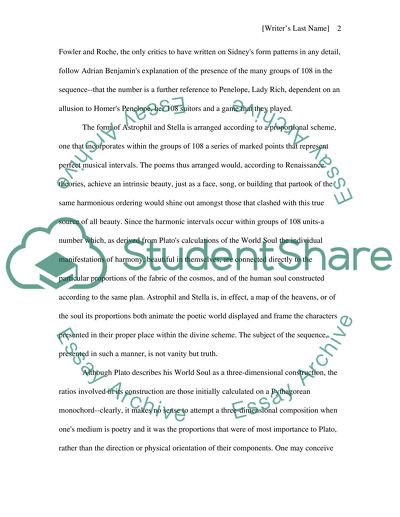Cite this document
(The Concept of Form in Sidney's Sonnets from Astrophil and Stella Book Report/Review, n.d.)
The Concept of Form in Sidney's Sonnets from Astrophil and Stella Book Report/Review. Retrieved from https://studentshare.org/literature/1529354-the-concept-of-form-in-sidneys-sonnets-from-astrophel-and-stella
The Concept of Form in Sidney's Sonnets from Astrophil and Stella Book Report/Review. Retrieved from https://studentshare.org/literature/1529354-the-concept-of-form-in-sidneys-sonnets-from-astrophel-and-stella
(The Concept of Form in Sidney'S Sonnets from Astrophil and Stella Book Report/Review)
The Concept of Form in Sidney'S Sonnets from Astrophil and Stella Book Report/Review. https://studentshare.org/literature/1529354-the-concept-of-form-in-sidneys-sonnets-from-astrophel-and-stella.
The Concept of Form in Sidney'S Sonnets from Astrophil and Stella Book Report/Review. https://studentshare.org/literature/1529354-the-concept-of-form-in-sidneys-sonnets-from-astrophel-and-stella.
“The Concept of Form in Sidney'S Sonnets from Astrophil and Stella Book Report/Review”, n.d. https://studentshare.org/literature/1529354-the-concept-of-form-in-sidneys-sonnets-from-astrophel-and-stella.


